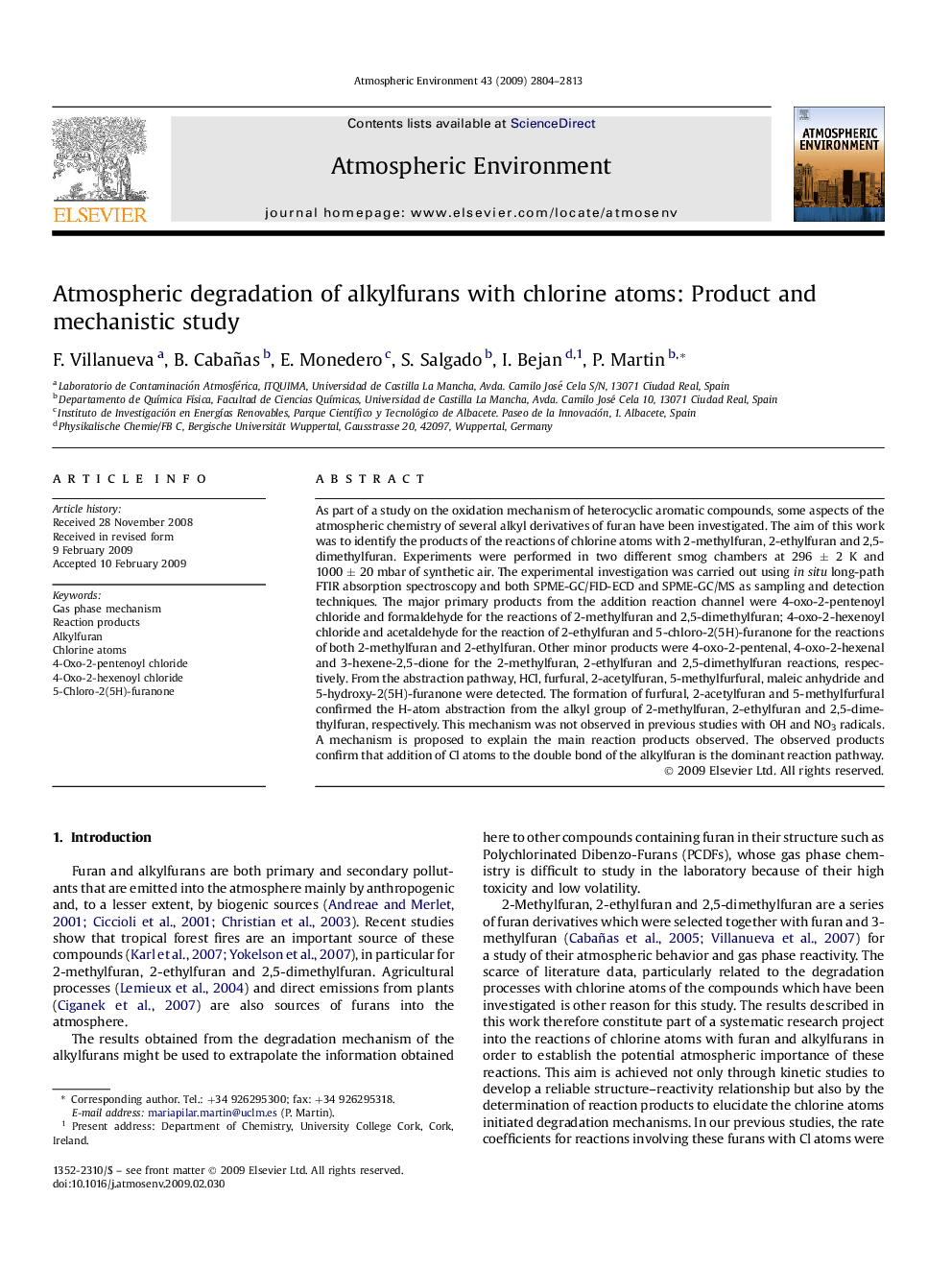| Article ID | Journal | Published Year | Pages | File Type |
|---|---|---|---|---|
| 4441952 | Atmospheric Environment | 2009 | 10 Pages |
As part of a study on the oxidation mechanism of heterocyclic aromatic compounds, some aspects of the atmospheric chemistry of several alkyl derivatives of furan have been investigated. The aim of this work was to identify the products of the reactions of chlorine atoms with 2-methylfuran, 2-ethylfuran and 2,5-dimethylfuran. Experiments were performed in two different smog chambers at 296 ± 2 K and 1000 ± 20 mbar of synthetic air. The experimental investigation was carried out using in situ long-path FTIR absorption spectroscopy and both SPME-GC/FID-ECD and SPME-GC/MS as sampling and detection techniques. The major primary products from the addition reaction channel were 4-oxo-2-pentenoyl chloride and formaldehyde for the reactions of 2-methylfuran and 2,5-dimethylfuran; 4-oxo-2-hexenoyl chloride and acetaldehyde for the reaction of 2-ethylfuran and 5-chloro-2(5H)-furanone for the reactions of both 2-methylfuran and 2-ethylfuran. Other minor products were 4-oxo-2-pentenal, 4-oxo-2-hexenal and 3-hexene-2,5-dione for the 2-methylfuran, 2-ethylfuran and 2,5-dimethylfuran reactions, respectively. From the abstraction pathway, HCl, furfural, 2-acetylfuran, 5-methylfurfural, maleic anhydride and 5-hydroxy-2(5H)-furanone were detected. The formation of furfural, 2-acetylfuran and 5-methylfurfural confirmed the H-atom abstraction from the alkyl group of 2-methylfuran, 2-ethylfuran and 2,5-dimethylfuran, respectively. This mechanism was not observed in previous studies with OH and NO3 radicals. A mechanism is proposed to explain the main reaction products observed. The observed products confirm that addition of Cl atoms to the double bond of the alkylfuran is the dominant reaction pathway.
